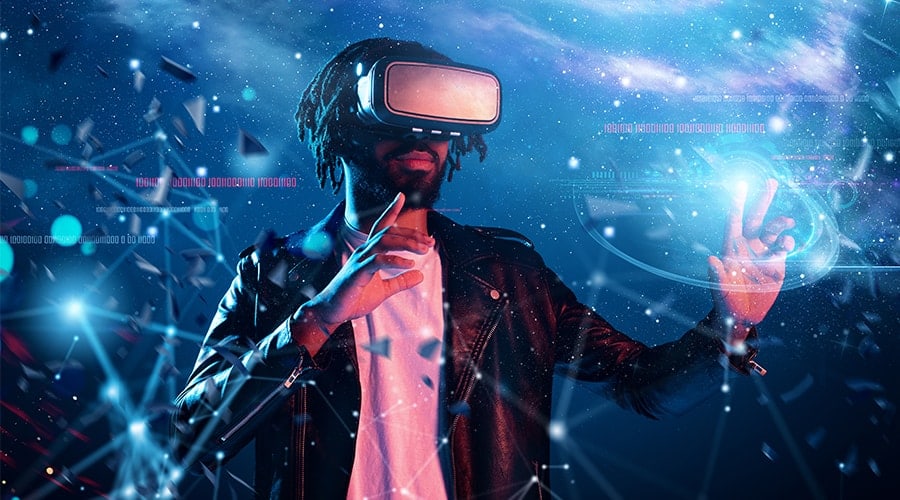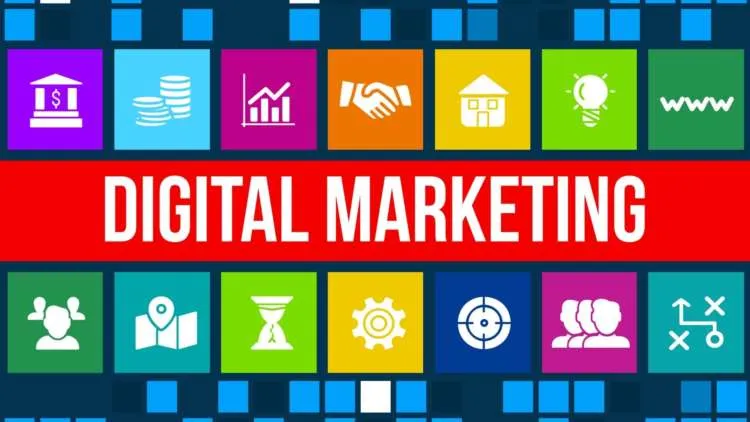Virtual reality Development (VR) technology has gained significant popularity in recent years, offering immersive and interactive experiences across various industries. Enterprises are increasingly recognizing the potential of VR applications to enhance training, collaboration, marketing, and customer experiences. If you’re considering VR application development for your enterprise, this guide will provide you with a step-by-step overview of the process.
- Identify your objectives: Determine the specific goals and objectives you want to achieve with your VR application. This could be anything from employee training to product simulations or virtual showrooms. Clearly define your target audience and the problem you intend to solve.
- Conduct market research: Understand the existing VR applications in your industry and identify gaps or opportunities. Analyze competitors’ offerings, user feedback, and market trends to gain insights that can inform your development strategy.
- Define the user experience: Outline the desired user experience for your VR application. Consider factors such as interactivity, navigation, realism, and intuitive controls. Create user personas to understand your target users’ needs and preferences.
- Select a development approach: Determine whether you want to develop the VR application in-house or collaborate with an external VR development agency. Assess your resources, expertise, and budget to make an informed decision.
- Choose a VR platform: Select a VR platform that aligns with your objectives and target audience. Popular options include Oculus Rift, HTC Vive, PlayStation VR, and mobile VR platforms like Google Cardboard or Samsung Gear VR. Each platform has its own development requirements and limitations, so choose the one that suits your needs best.
- Build a development team: If you decide to develop the VR application in-house, assemble a skilled team with expertise in VR development. This typically includes VR programmers, 3D artists, UX/UI designers, and QA testers. Collaborate closely with your team to ensure the development process is aligned with your objectives.
- Design and develop the VR application: Begin the development process by creating wireframes and storyboards to visualize the user experience. Develop a prototype to validate your concept before investing significant resources. Use appropriate software tools, such as Unity or Unreal Engine, to build the VR application, incorporating 3D models, interactive elements, and realistic physics.
- Test and iterate: Conduct thorough testing at various stages of development to identify and address any issues or bugs. Test the application on different VR devices to ensure compatibility and optimize performance. Gather user feedback and iterate based on their suggestions to improve the overall experience.
- Integrate with existing systems: If your VR application needs to integrate with existing enterprise systems or data sources, ensure a seamless connection. This may involve integrating with customer relationship management (CRM) systems, learning management systems (LMS), or other enterprise software.
- Deployment and maintenance: Once the VR application is ready, deploy it to the intended devices or VR platforms. Make it available through appropriate distribution channels, such as VR app stores or enterprise deployment platforms. Provide regular updates, bug fixes, and improvements to ensure the application remains up-to-date and functional.
- Measure success and iterate: Define key performance indicators (KPIs) to measure the success of your VR application. Monitor user engagement, feedback, and the impact on your business objectives. Continuously iterate and improve the application based on user data and changing market dynamics.
- Support and training: Provide adequate support and training to users who will interact with your VR application. This includes comprehensive documentation, user guides, and tutorials to ensure users can maximize the benefits of the VR experience.
Remember that VR application development for enterprises is an ongoing process. As technology evolves and user expectations change, you may need to update and enhance your application to stay competitive and deliver optimal experiences.
By following this guide, you can lay a solid foundation for VR application development and harness the power of virtual reality to drive innovation and growth within your enterprise.

The VR Application Development Process
The VR application development process involves several key steps to ensure a successful and effective application. Here’s a detailed breakdown of the process:
- Ideation and Conceptualization:
- Define the objectives and goals of your VR application.
- Identify the target audience and their needs.
- Brainstorm ideas and concepts that align with your objectives.
- Market Research:
- Study the existing VR applications in your industry.
- Analyze competitors’ offerings, user feedback, and market trends.
- Identify gaps or opportunities for your VR application.
- Planning and Scope:
- Create a detailed project plan with timelines and milestones.
- Define the scope of your VR application’s features and functionalities.
- Identify the resources, budget, and technology required for development.
- Design:
- Create wireframes, storyboards, and user flows to visualize the user experience.
- Design the user interface (UI) and user experience (UX) of your VR application.
- Ensure intuitive controls, immersive environments, and interactive elements.
- Development:
- Select a VR development platform such as Unity or Unreal Engine.
- Develop the 3D assets, models, and environments for your application.
- Implement the desired features and functionalities based on the project plan.
- Testing and Quality Assurance:
- Conduct thorough testing to identify and fix bugs or issues.
- Test the VR application on different devices and platforms.
- Ensure compatibility, performance, and user experience meet the desired standards.
- Integration and Optimization:
- Integrate the VR application with any required external systems or data sources.
- Optimize the application for performance and responsiveness.
- Ensure seamless interaction between the VR application and other enterprise software if necessary.
- Deployment:
- Prepare the VR application for deployment on target devices or platforms.
- Follow the submission guidelines of VR app stores or enterprise deployment platforms.
- Deploy the application and make it accessible to your target audience.
- Maintenance and Updates:
- Provide regular updates and bug fixes to improve the application.
- Monitor user feedback and analytics to identify areas for improvement.
- Stay updated with the latest VR technologies and industry trends.
- User Support and Training:
- Provide comprehensive documentation and user guides.
- Offer training and support resources to users.
- Ensure users can maximize the benefits of the VR application.
Throughout the entire VR application development process, it is crucial to involve key stakeholders, gather user feedback, and iterate based on insights and changing requirements. By following these steps, you can create a high-quality VR application that meets your objectives and delivers an immersive experience for your target audience.
The Costs Of VR Application Development
The costs of VR application development can vary widely depending on various factors such as the complexity of the application, the platform chosen, the development approach, and the expertise of the development team. Here are some key cost considerations:
- Development Team: The cost of hiring a skilled VR development team can vary based on their experience, location, and the size of the team. This team typically includes VR programmers, 3D artists, UI/UX designers, and QA testers. The more experienced and specialized the team, the higher the cost.
- Platform and Technology: The choice of VR platform and development tools can impact the development costs. Some platforms may require specific licensing fees or hardware costs. Additionally, the complexity and capabilities of the chosen technology can affect development time and costs.
- Design and Assets: Creating 3D assets, models, and environments for the VR application involves costs for graphic designers, 3D artists, and potentially outsourcing assets creation. The complexity and quantity of assets required can influence the overall cost.
- Development Time: The time required to develop a VR application impacts the cost. Complex applications with advanced features may take longer to develop, resulting in higher development costs.
- Testing and Quality Assurance: Thorough testing and QA processes are essential for VR applications to ensure optimal performance and user experience. Allocating resources for testing, bug fixing, and quality assurance increases the overall development cost.
- Integration and Compatibility: If the VR application needs to integrate with existing enterprise systems or data sources, additional development and integration costs may arise.
- Maintenance and Updates: Ongoing maintenance, updates, and support for the VR application are necessary to keep it up-to-date, fix any issues, and address user feedback. Budgeting for these ongoing costs is important.
- Hardware and Devices: Depending on the target platform and the scale of the deployment, there may be costs associated with acquiring VR hardware and devices for development and testing purposes.
It’s important to note that the cost of VR application development can range from tens of thousands to hundreds of thousands of dollars, and in some cases even more for highly complex or enterprise-scale projects. It’s recommended to conduct a thorough analysis of your specific requirements, create a detailed project plan, and consult with experienced VR development agencies or professionals to get accurate cost estimates tailored to your project.

FAQ’s
1: What industries can benefit from VR application development? A1: VR application development can benefit a wide range of industries, including but not limited to:
- Gaming and Entertainment: VR gaming experiences, virtual theme parks, and immersive storytelling.
- Healthcare: Medical training simulations, patient therapy, and virtual surgeries.
- Education: Virtual classrooms, interactive learning experiences, and historical simulations.
- Real Estate: Virtual property tours, architectural visualization, and interior design simulations.
- Manufacturing: Virtual product prototyping, assembly line simulations, and safety training.
- Retail and E-commerce: Virtual shopping experiences, virtual try-on, and product visualization.
- Travel and Tourism: Virtual destination tours, travel planning, and cultural experiences.
- Marketing and Advertising: Immersive brand experiences, product demonstrations, and virtual showrooms.
- Sports and Fitness: Virtual training, sports simulations, and fitness workouts.
- Automotive: Virtual test drives, car customization, and design visualization.
2: What are the hardware requirements for VR application development? A2: The hardware requirements for VR application development depend on the specific VR platform you choose. Generally, VR development requires a powerful computer with a capable graphics card, sufficient RAM, and ample storage. Additionally, you’ll need a VR headset and controllers that are compatible with the chosen VR platform.
3: What programming languages are commonly used for VR application development? A3: The programming languages commonly used for VR application development include:
- C#: This language is commonly used with the Unity game engine, which is a popular choice for VR development.
- C++: C++ is used with both Unity and Unreal Engine, providing more flexibility and performance optimization.
- JavaScript: JavaScript is often used for web-based VR experiences or to create VR applications using frameworks like A-Frame or React VR.
- Python: Python is used for scripting and automation in VR development, especially for tasks related to data processing or AI integration.
4: How long does it take to develop a VR application? A4: The development timeline for a VR application can vary depending on factors such as the complexity of the application, the size of the development team, the availability of required assets, and the development approach. Simple VR applications may take a few weeks to develop, while more complex and feature-rich applications can take several months or even longer.
5: Can existing applications be converted into VR applications? A5: Yes, existing applications can be converted or adapted into VR applications, depending on their nature and compatibility with VR technology. However, it’s important to consider the specific requirements and limitations of VR when converting an application, as it may require redesigning the user interface, integrating VR-specific features, and optimizing performance for VR platforms.
6: What are the ongoing costs of maintaining a VR application? A6: The ongoing costs of maintaining a VR application include regular updates, bug fixes, hosting or distribution costs (if applicable), customer support, and potential upgrades to keep up with evolving VR technologies. It’s important to allocate resources and budget for these ongoing costs to ensure the longevity and effectiveness of the VR application.
7: How can VR applications be distributed to users? A7: VR applications can be distributed to users through various channels, depending on the target platform and audience. Options for distribution include VR app stores (such as Oculus Store or SteamVR), enterprise deployment platforms, direct downloads from websites, or pre-loaded installations on VR hardware. The distribution method will depend on the platform’s guidelines and the specific requirements of your target audience.
Read More : How artificial intelligence is transforming the world





